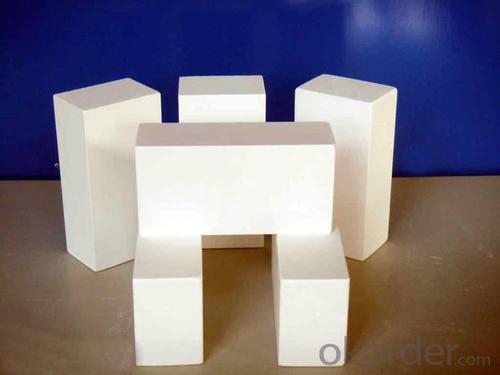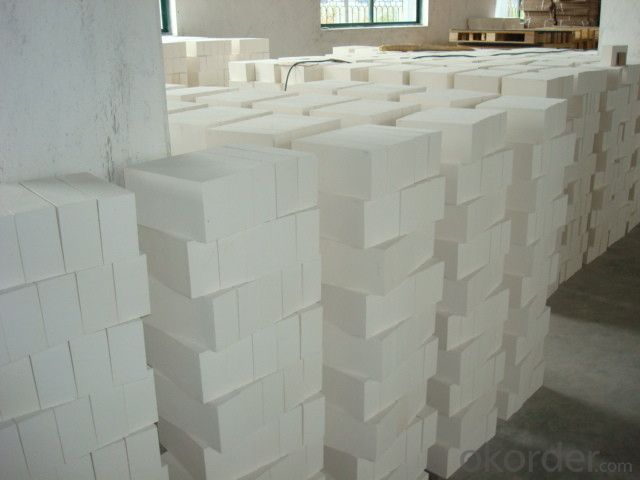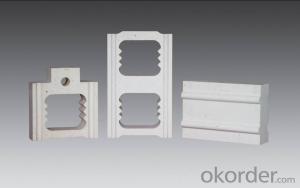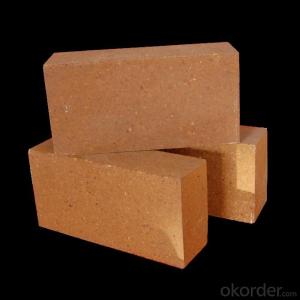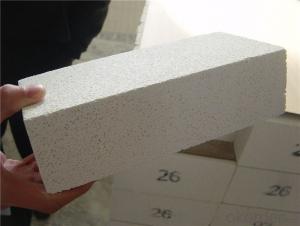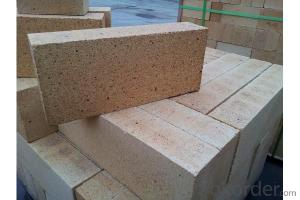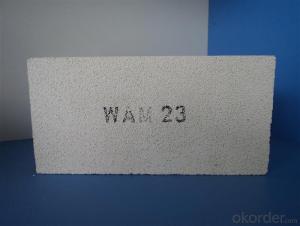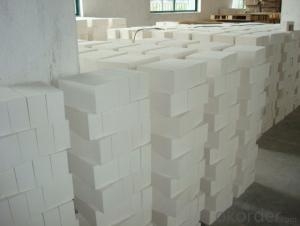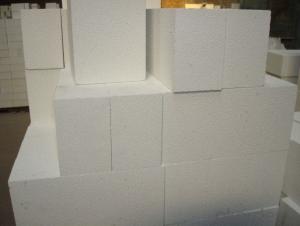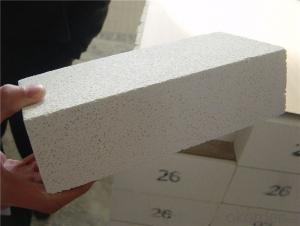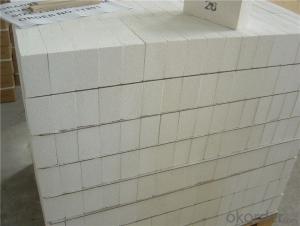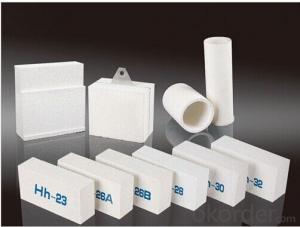Insulating Fire Brick - Light Dense Mullite Insulation Brick
- Loading Port:
- Shanghai
- Payment Terms:
- TT OR LC
- Min Order Qty:
- 1 m.t.
- Supply Capability:
- 10000 m.t./month
OKorder Service Pledge
OKorder Financial Service
You Might Also Like
Thermal Insulation Fire Clay Brick
Refractory brick is a refractory material used in lining furnaces, kilns, fireboxes, and fireplaces.
We provide high quality Refractory Fire Bricks that are used on wide range in the various industries like Cement, Glass and Steel. Refractory Fire Bricks are provided as per the quantity and specifications required by the customers. We provide an extensive range of Refractory Fire Bricks at reasonable prices that depend upon the quantity ordered.
Application
Insulating Fire Brick are used for the lining of converter, alternating current arc furnace, direct Current arc furnace and the ladle slag line, etc.
Company Advantage
(1)Long Insulating Fire Brick manufacture history: 25 years manufacturer
(2)Advanced equipment and good service
(3)Diversification of production standards: ISO ANSI FEPA JIS ASTM
(4)Flexible payment: T/T L/C D/P D/A
(5)Professional marketing team and after-sale service
Insulating Fire Brick main feature:
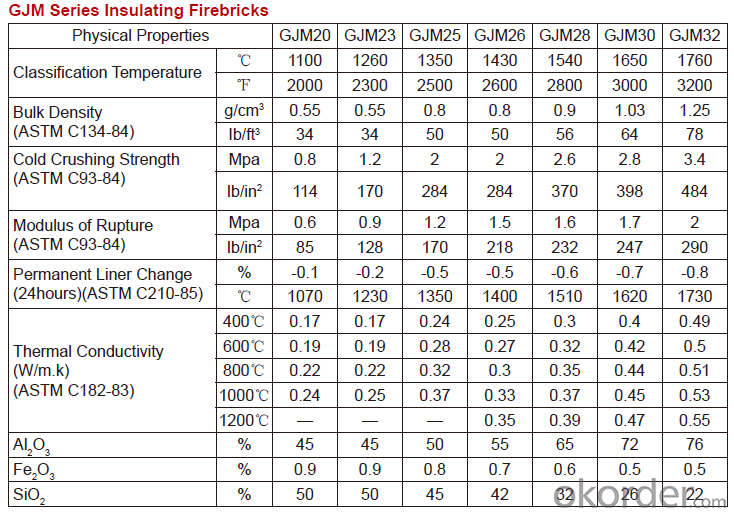
Equipment
1 unit of Ceramic Abrasive (SG Abrasive) pilot production line
2 units of Compact grain Abrasive pilot production lines
1 unit of high-end coated abrasives (abrasive cloth) production line
3 large flexible crushing and sieving lines for grit production lines
6 units of 5000KVA-10000KVA dumping type electric arc furnaces for Brown Fused Alumina fusion
FAQs
Q1 What’s the transport method?
A1 FCL delivery goods with wooden pallet or wooden case by sea; If LCL delivery, must with wooden case; Sometimes need open top, flat rack or bulk cargo.
Q2 What’s the required payment term?
A2 Generally 30% TT as the prepayment, 70% TT before delivery. If need, 100% Irrevocable Letter of Credit or negotiation.
Q3 Which country are our products exported to?
A3 Apart from entire Chinese market, the US, Russia, Japan, Korea, Australia and some Southeast Asian Nations.
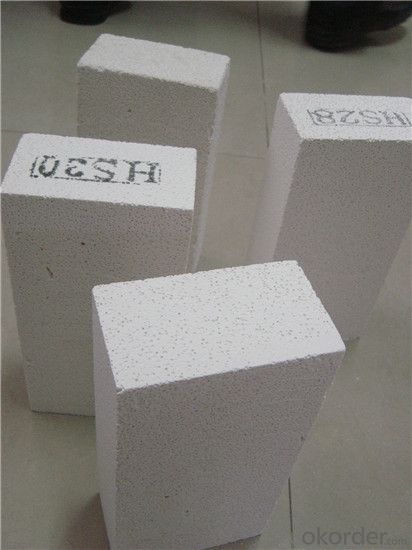

- Q: Can insulating fire bricks be used in refractory castings?
- Yes, insulating fire bricks can be used in refractory castings. These bricks are designed to have low thermal conductivity, making them suitable for applications where high insulation is required, such as in refractory castings. They provide excellent heat insulation and can withstand high temperatures, making them an ideal choice for various refractory applications.
- Q: What is the function of insulating bricks? Where can I use it?
- Replace the aluminum plate, honeycomb board, curtain wall and other commonly used decorative materials, multi-functional integration, a construction can solve the thermal insulation decoration two functional requirements, smooth, smooth and beautiful, decorative strong. The utility model has the advantages of high strength, good rigidity, light weight, earthquake resistance, wind resistance, creep resistance, superior performance, lower building load, more economy and durability. Fire retardant, heat preservation, energy saving, sound insulation, heat insulation, crack resistance, waterproof, according to the 65% building energy conservation requirements for construction design.
- Q: Can insulating fire bricks be used in the construction of foundry furnaces?
- Yes, insulating fire bricks can be used in the construction of foundry furnaces. These bricks are made from lightweight refractory materials that have excellent insulation properties, allowing them to withstand high temperatures and retain heat efficiently. They are commonly used in foundry furnaces to line the walls, floor, and roof, helping to minimize heat loss and improve energy efficiency.
- Q: Can insulating fire bricks be used for insulation in cement kilns?
- Yes, insulating fire bricks can be used for insulation in cement kilns. Insulating fire bricks are made from lightweight materials with high insulation properties, such as ceramic fibers or expanded clay. These bricks are designed to have low thermal conductivity, meaning they can effectively reduce heat transfer and retain heat within the kiln. Cement kilns operate at very high temperatures, often exceeding 1,400 degrees Celsius (2,500 degrees Fahrenheit). The use of insulating fire bricks in the kiln can help prevent heat loss, improve energy efficiency, and reduce fuel consumption. These bricks create a barrier between the hot gases inside the kiln and the outer environment, reducing the amount of heat that escapes. Moreover, insulating fire bricks have excellent resistance to thermal shocks, allowing them to withstand the extreme temperature fluctuations that occur in cement kilns. This durability ensures long-lasting insulation, reducing the need for frequent maintenance and replacement. However, it is important to note that the specific type and composition of insulating fire bricks required for cement kiln insulation may vary depending on the kiln's design, operating conditions, and other factors. It is advisable to consult with experts or manufacturers who specialize in refractory materials to ensure the correct selection and installation of insulating fire bricks for cement kiln insulation.
- Q: Do insulating fire bricks have good mechanical strength?
- Yes, insulating fire bricks have good mechanical strength. They are specifically designed to withstand high temperatures and provide excellent thermal insulation while maintaining their structural integrity.
- Q: Can insulating fire bricks be used in chimneys and flues?
- Yes, insulating fire bricks can be used in chimneys and flues. These bricks are designed to withstand high temperatures and provide insulation, making them suitable for use in areas where heat needs to be contained or controlled, such as chimneys and flues.
- Q: Can insulating fire bricks be used in power plants?
- Yes, insulating fire bricks can be used in power plants. Insulating fire bricks, also known as refractory bricks, are designed to withstand high temperatures and provide excellent thermal insulation. They are commonly used in various industrial applications, including power plants. Power plants generate a significant amount of heat during the combustion of fossil fuels or the process of nuclear fission. To maintain efficient operations and prevent heat loss, insulating fire bricks are used to line the walls, floors, and ceilings of furnaces, boilers, and other high-temperature areas in power plants. Insulating fire bricks have low thermal conductivity, which means they are effective at reducing heat transfer. This helps to conserve energy and improve the overall efficiency of power plants. Additionally, they have high resistance to thermal shock, meaning they can withstand rapid temperature changes without cracking or breaking. Moreover, insulating fire bricks are lightweight and easy to install, making them a practical choice for power plant applications. They are also resistant to chemical corrosion, which is important in power plants where various gases and chemicals are present. In conclusion, insulating fire bricks are a suitable choice for power plants due to their ability to withstand high temperatures, provide excellent thermal insulation, and resist thermal shock and chemical corrosion. Using these bricks in power plant applications helps to enhance energy efficiency and maintain optimal operating conditions.
- Q: Are insulating fire bricks suitable for outdoor use?
- No, insulating fire bricks are not suitable for outdoor use as they are not designed to withstand the harsh weather conditions and can deteriorate quickly when exposed to moisture and temperature fluctuations.
- Q: Are insulating fire bricks suitable for use in steel mills?
- Insulating fire bricks prove to be suitable for deployment within steel mills. These bricks are crafted from lightweight materials possessing excellent insulation capabilities, enabling them to endure elevated temperatures and offer formidable insulation. Within the realm of steel mills, where the steelmaking process generates exceedingly high temperatures, insulating fire bricks find utilization in the lining of furnaces, kilns, and other high-temperature applications. These bricks serve to curtail heat loss, enhance energy efficiency, and safeguard the steel mill equipment against excessive heat. In addition, insulating fire bricks exhibit commendable thermal shock resistance, a crucial attribute within steel mills characterized by swift temperature fluctuations. All in all, the deployment of insulating fire bricks in steel mills presents a dependable and efficacious solution for preserving high-temperature environments and optimizing the steelmaking process.
- Q: Can insulating fire bricks be used as a lining for chimneys?
- Yes, insulating fire bricks can be used as a lining for chimneys. These bricks are designed to withstand high temperatures and provide insulation, making them suitable for lining chimneys and protecting them from heat damage.
Send your message to us
Insulating Fire Brick - Light Dense Mullite Insulation Brick
- Loading Port:
- Shanghai
- Payment Terms:
- TT OR LC
- Min Order Qty:
- 1 m.t.
- Supply Capability:
- 10000 m.t./month
OKorder Service Pledge
OKorder Financial Service
Similar products
Hot products
Hot Searches
Related keywords



